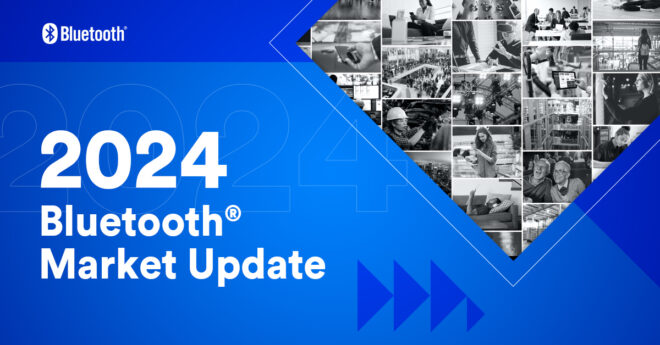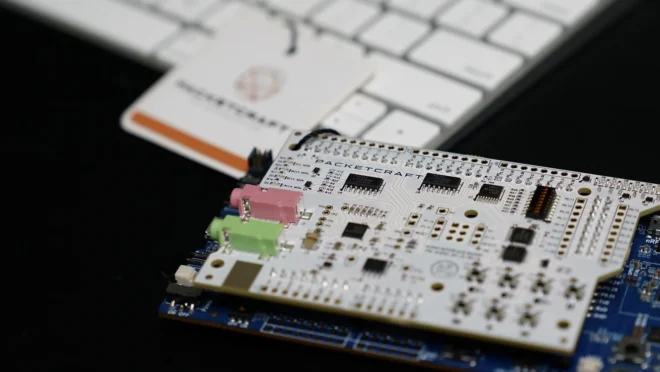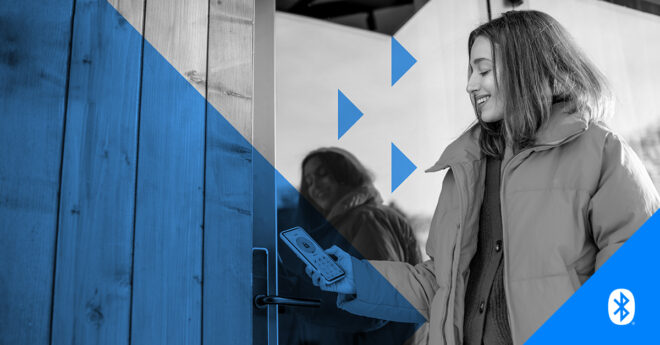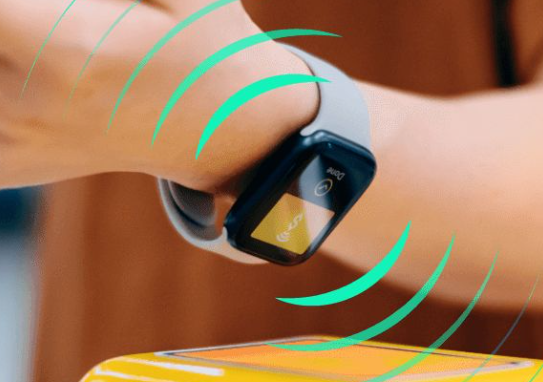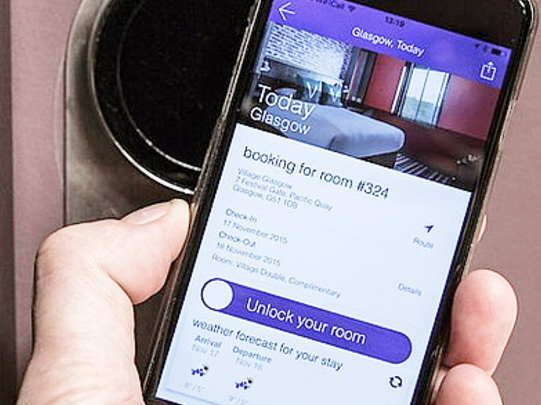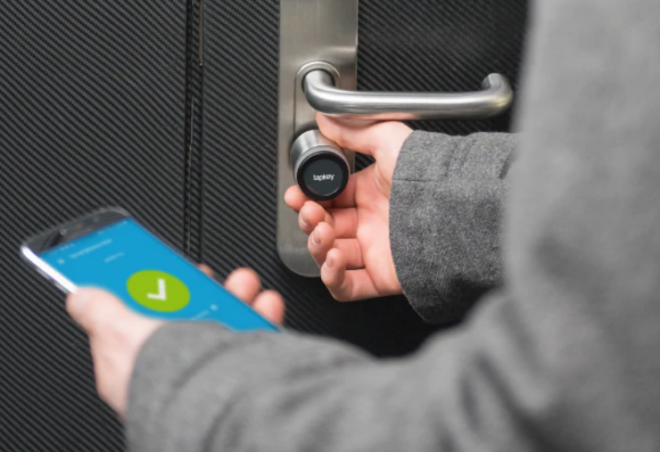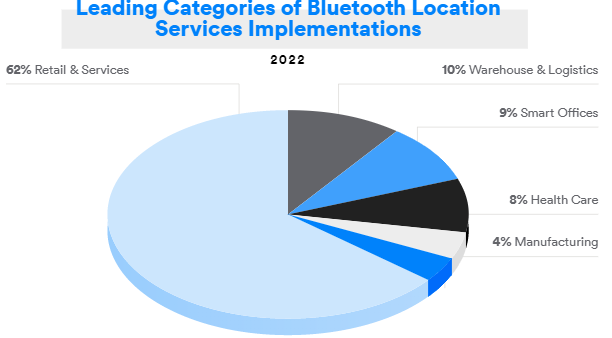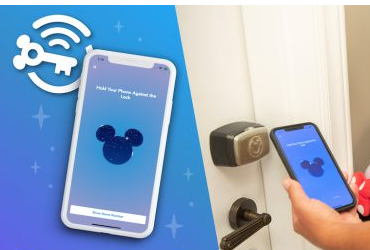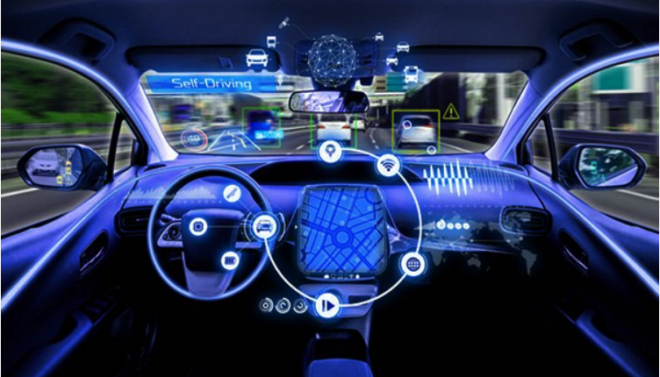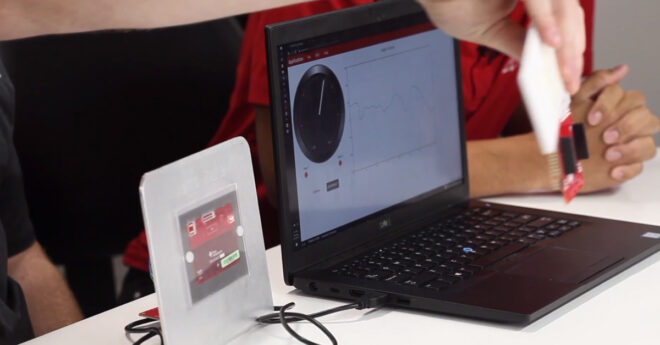It is well known that Bluetooth® technology opens doors in a figurative sense. But now, it also does it in the literal sense. Bluetooth Special Interest Group (SIG) member companies like Tapkey make this a reality. The Viennese company has developed a solution that uses a smartphone app and Bluetooth technology to open entrance doors, hotel rooms, delivery boxes, shared offices, or cars. We spoke to Gregor Zehetner, co-founder, and co-CEO of Tapkey, about this.
Q&A With Gregor Zehetner From Tapkey
Mr. Zehetner, Tapkey has been in the market for seven years. How did the business idea come about?
The idea for Tapkey came from a personal need. In the early 2010s, we had the challenge of managing office access for larger, changing project teams. With metal keys, this was anything but easy to manage. With our background in secure and scalable mobile solutions, we started by creating our own prototype reader that could be accessed with an app. After spending three months in Silicon Valley at a time when the first smart locks were coming to market, we quickly realized that this would be a promising business area.
Was your solution designed as an open platform right from the start?
Initially, we wanted to eliminate the annoying problem of handing over keys and the repeated loss of keys. That was the birth of our Tapkey mobile app. In the meantime, however, Tapkey has evolved into an open platform with extensive integration functions. The key is Access as a Feature. This is because many manufacturers of access control systems, as well as providers of car sharing solutions or real estate, require industry-specific functions that they develop and offer in their own mobile app. This creates an end-to-end user experience for the customer, for example a tenant app in which the tenant can not only communicate with the property management company or view their rental agreement but can also open their door directly. This is what we call Access as a Feature.
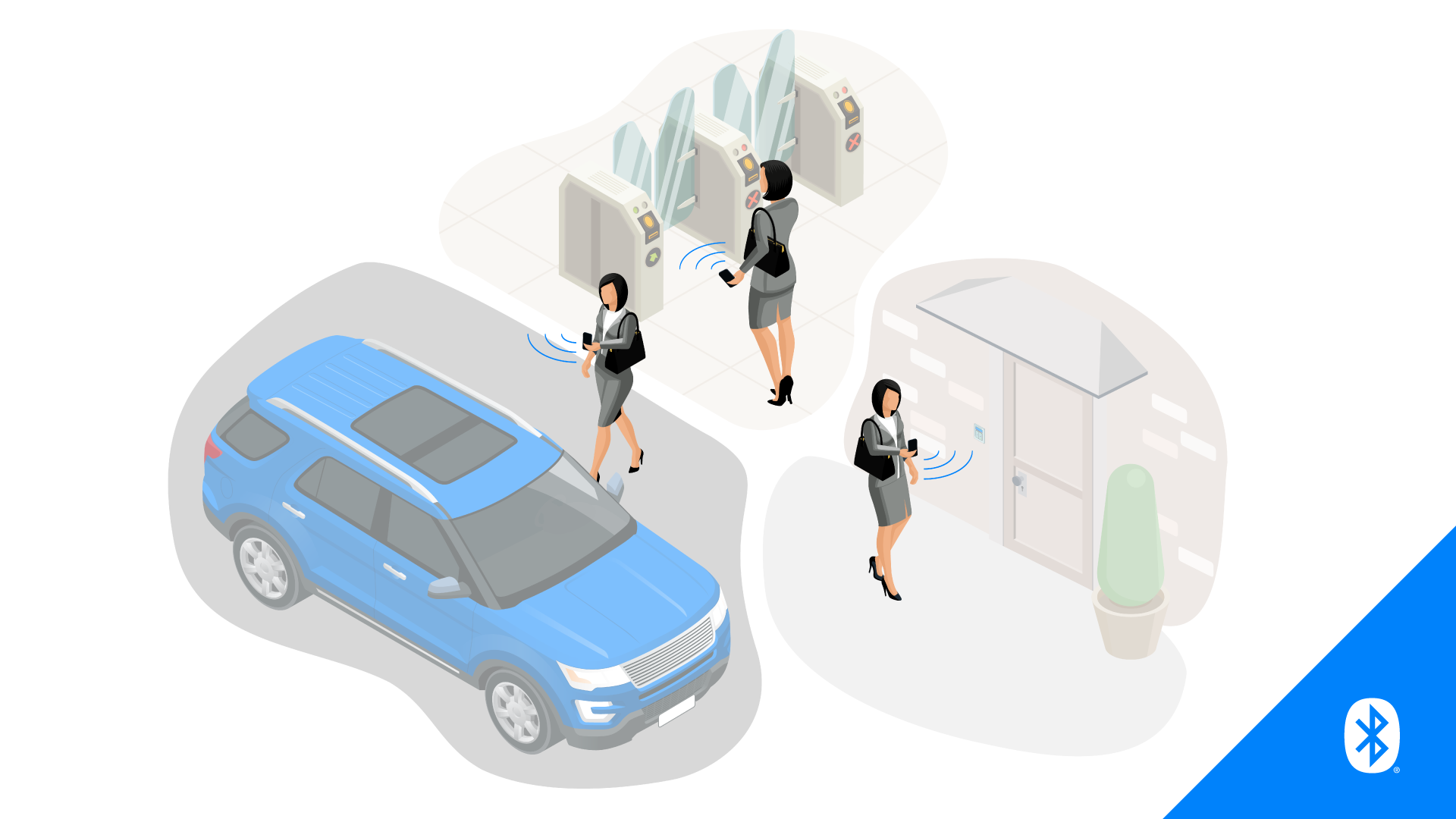
Are automotive and real estate the most important markets?
Currently, they each account for about half of our business. But our platform is suitable for many other applications. These include not only classic areas such as hotels, coworking spaces, or apartment rentals. Storage, bike sharing, or smart logistics providers are also recognizing the benefits of digital access control.
How did you come to integrate Bluetooth technology?
At the beginning, we worked with NFC (Near-Field Communication) because the locking devices already available at the time could be used with this technology. But with the advent of Bluetooth® Low Energy (LE), a completely new market emerged around smartphone apps. Compared to NFC, Bluetooth LE scores points above all, with a wider distribution among devices and a greater range. This means that doors or barriers can be opened from a distance of several meters and do not have to be within a few centimeters. Ultimately, however, both technologies complement each other so that we use the optimal technology depending on the use case.
![]()
ON-DEMAND WEBINAR
The Myths & Facts about Bluetooth® Technology as a Positioning Radio
Watch this detailed discussion into the challenges and opportunities in front of indoor location services systems and how to tap into their potential in manufacturing, logistics, retail, offices, and more.
Developers and integrators can develop their own solutions based on your platform. What do they need to keep in mind?
We offer a publicly accessible developer portal at developers.tapkey.io, where developers and technical decision makers can find all relevant technical information about our interfaces. For a collaboration, an integrator signs an Integrator Licence Agreement with Tapkey and can get started immediately. It is important to keep our constantly evolving SDKs (software development kits) up to date in the integrating of products to ensure a high security standard.
Speaking of security, how do you prevent unwanted access?
Cybercrime is, of course, omnipresent today, and the issue of security is business critical for mobile credential platforms like Tapkey. That’s why we work with proven external subject matter experts in this area who give us an excellent report card for our basic security concepts. On the one hand, every Tapkey-enabled locking device has individual security features that reliably ward off potential attackers. On the other hand, we double secure the transmission path between the smartphone and the locking device. To this end, we combine the state-of-the-art security of the Bluetooth® protocol with a specially developed security protocol that offers additional protection against attacks, regardless of the transport protocol.
Depending on the specific specifications, Bluetooth security functions are mandatory or only recommended in certain application scenarios. It is the responsibility of the product manufacturer to analyze the specific security risks, as well as those of the people who will be using the product. The same applies to the conditions under which it is to be used. Given the range of measures we have implemented, Tapkey-enabled products are very well protected against unauthorized access or entry. Of course, it is always possible to add additional security elements to the hardware. But too many of those elements not only drive up the cost enormously but also the user experience sometimes suffers. Therefore, we try to position Tapkey ideally in the triangle of security, costs, and usability – without compromising on our established high level of protection.
![]()
FEATURED INFOGRAPHIC
Bluetooth® Location Services Infographic
See 8 use cases for enhancing building efficiencies and creating a better visitor experience, discover new data that supports the latest trends and forecasts, and find out what’s driving the rapid adoption of location services solutions.
Bluetooth®技術が、比喩的に「(革新の)扉を開く」と表現されることはよく知られています。それが今、文字通り実際に扉を開いています。これを実現したのはBluetooth SIGのメンバー企業、Tapkey。ウィーンを本拠とする同社はスマートフォンアプリとBluetooth技術を使用し、エントランス、ホテルの部屋、シェアオフィス、車などのドアを開けるためのソリューションを開発しました。Tapkeyの共同創設者であり共同CEOを務めるグレゴール・ゼヘットナー(Gregor Zehetner)氏にお話を伺いました。
Tapkeyグレゴール・ゼヘットナー氏とのQ&A
Tapkeyが市場に登場してから7年たちます。そのビジネスのアイデアはどのように生まれたのですか?
Tapkeyのアイデアは個人的なニーズから生まれました。2010年代序盤に私たちは大きなプロジェクトで、人が頻繁に入れ替わるプロジェクトチームのオフィスの入退室管理という課題に直面しました。金属製の鍵での管理は、簡単というには程遠いものでした。そこで、セキュアでスケーラブルなモバイルソリューションに関する私たちの経験を活かし、アプリでアクセスできるリーダーの試作品を作ることから始めました。当時、シリコンバレーでは最初のスマートロックが登場していましたが、そこで3カ月過ごすうちに、これは有望なビジネス分野だとすぐに気が付きました。
このソリューションは当初からオープンプラットフォームとして設計されたのでしょうか?
初めは、鍵を手渡したり、繰り返し紛失が発生したりという面倒な問題をなくしたいと思っていました。こうしてTapkeyモバイルアプリが誕生しました。一方でTapkeyは広範な統合機能を備えたオープンプラットフォームにも進化しています。「Access as a Feature」(機能としてのアクセス)というのが鍵です。入退管理システムメーカーの多く、そしてカーシェアリングソリューションや不動産の事業者も、それぞれの業界特有の機能に合わせて開発を行い、それぞれのモバイルアプリで提供する必要があるからです。こうすることで、利用者の側ではすべてを網羅したユーザー体験を享受できます。たとえば、入居者用アプリで不動産管理会社に連絡したり、賃貸契約書を閲覧したりできるだけでなく、部屋のドアも直接開けることができる、といった具合いです。これを私たちは「Access as a Feature」(機能としてのアクセス)と呼んでいます。

最重要市場は、自動車と不動産でしょうか?
現在、この2つの分野が当社のビジネスを約半分ずつ占めています。ですが、当社のプラットフォームは他の数多くの用途にも適しています。従来からのホテル、コワーキングスペース、賃貸アパートだけではありません。レンタル倉庫、バイクシェア、スマート物流の事業者も、デジタルな入退管理のメリットに気付き始めています。
Bluetooth技術の搭載はどのように決まったのですか?
最初はNFC(近距離無線通信)を使用していました。当時の既存のロック機器で使用できる技術だったからです。ところが、Bluetooth® Low Energy(LE)が登場したことで、スマートフォンアプリの世界でまったく新しい市場が台頭してきました。NFCに比べるとBluetooth LEはすべてにおいて優れていました。搭載デバイスも幅広く、受信範囲も広かったのです。それは、ドアや障壁を、数センチではなく数メートル離れたところから開けることができることを意味していました。この2つの技術は最終的には互いに補完する関係にあり、当社ではユースケースに合わせて最適な技術を使用しています。
デベロッパーやインテグレーターは、Tapkeyのプラットフォームで独自のソリューションを開発できます。このときに留意すべき点はありますか?
当社ではデベロッパー用ポータルをdevelopers.tapkey.ioに公開しています。ここは、デベロッパーや技術的な判断を行わなければならない方々が、インターフェースに関する技術情報をすべて入手できる場所となっています。インテグレーターとの提携に関しては、Tapkeyとインテグレーター向けライセンス契約を結んでいただければすぐに作業を開始していただけます。製品のインテグレーションを行う際には、高いセキュリティ水準を維持するため、常に進化するSDK(ソフトウェア開発キット)を最新に保つことが重要です。
セキュリティといえば、望ましくないアクセスはどのように防止していますか?
サイバー犯罪は、いうまでもなく今日どこでも発生しますので、Tapkeyのようなモバイル認証プラットフォームにとって、セキュリティはビジネス的にも極めて重要です。このため、当社ではこの分野で実績のある外部のエキスパートと提携しており、当社の基本的なセキュリティコンセプトに高い評価をもらっています。一方では、Tapkey対応のロック機器には必ず攻撃者を確実に退ける個々のセキュリティ機能が備わっています。もう一方では、スマートフォンとロック機器との間の伝送路に二重のセキュリティを設けています。具体的には、Bluetooth®プロトコルの最先端セキュリティを、トランスポートプロトコルが何であるかにかかわらず攻撃に対して追加の保護を提供する、特別開発のセキュリティプロトコルと組み合わせています。
具体的な仕様によって、Bluetoothのセキュリティ機能は必須であったり、特定のアプリケーションのシナリオによっては推奨にとどまったりします。個々のセキュリティリスクと、製品の利用者のリスクを分析する責任は各製品の製造者にあります。製品が使用される状況についても同じです。当社で実装している様々な対策を考えると、Tapkey対応製品は不正アクセスや侵入に対してとてもよく守られていると思います。もちろん、ハードウェアにセキュリティ要素を追加することはいつでも可能です。ただし、そういった要素はコストを大幅に押し上げるだけでなく、使い勝手も悪くしてしまう場合があります。このため、当社では定評をいただいている高い水準の保護を損なうことなく、セキュリティ、コスト、使いやすさの三角形の中で、Tapkeyを理想的に位置付けられるように努めています。



